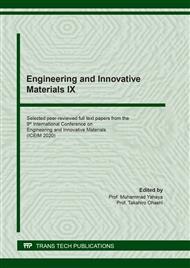p.3
p.9
p.17
p.23
p.29
p.35
p.43
p.49
p.57
Subsurface Crack Initiation and Propagation in an Open Dieforged High Strength Steel: A Microstructural Analysis
Abstract:
This paper presents an experimental investigation with the objective to determine the root causes for the cracking of a large size bar made of a medium carbon low alloy steel after open die forging and heat treatments operations. The cracks were observed below the surface during the machining step. In order to understand the mechanisms of crack initiation and propagation, micro-CT tomography and scanning electron microscope (SEM) were employed. Microstructural damage analysis revealed oxidation of different alloying elements, more specifically manganese, chromium and silicon. The presence of defects in the form of cavities and porosities were also observed at the grain boundaries. Some of the above defects were observed along the crack path, while others were on both sides of the cracks without any connection to them and finally, a third group completely isolated from any crack. The characteristics of the defects were thoroughly analyzed and it was found that the crack initiation could be attributed principally to the porosities/cavities formed during solidification. The analysis also showed that crack propagation occurred during solidification and/or forging and heat treatment steps.
Info:
Periodical:
Pages:
29-34
Citation:
Online since:
March 2021
Keywords:
Price:
Сopyright:
© 2021 Trans Tech Publications Ltd. All Rights Reserved
Share:
Citation:


